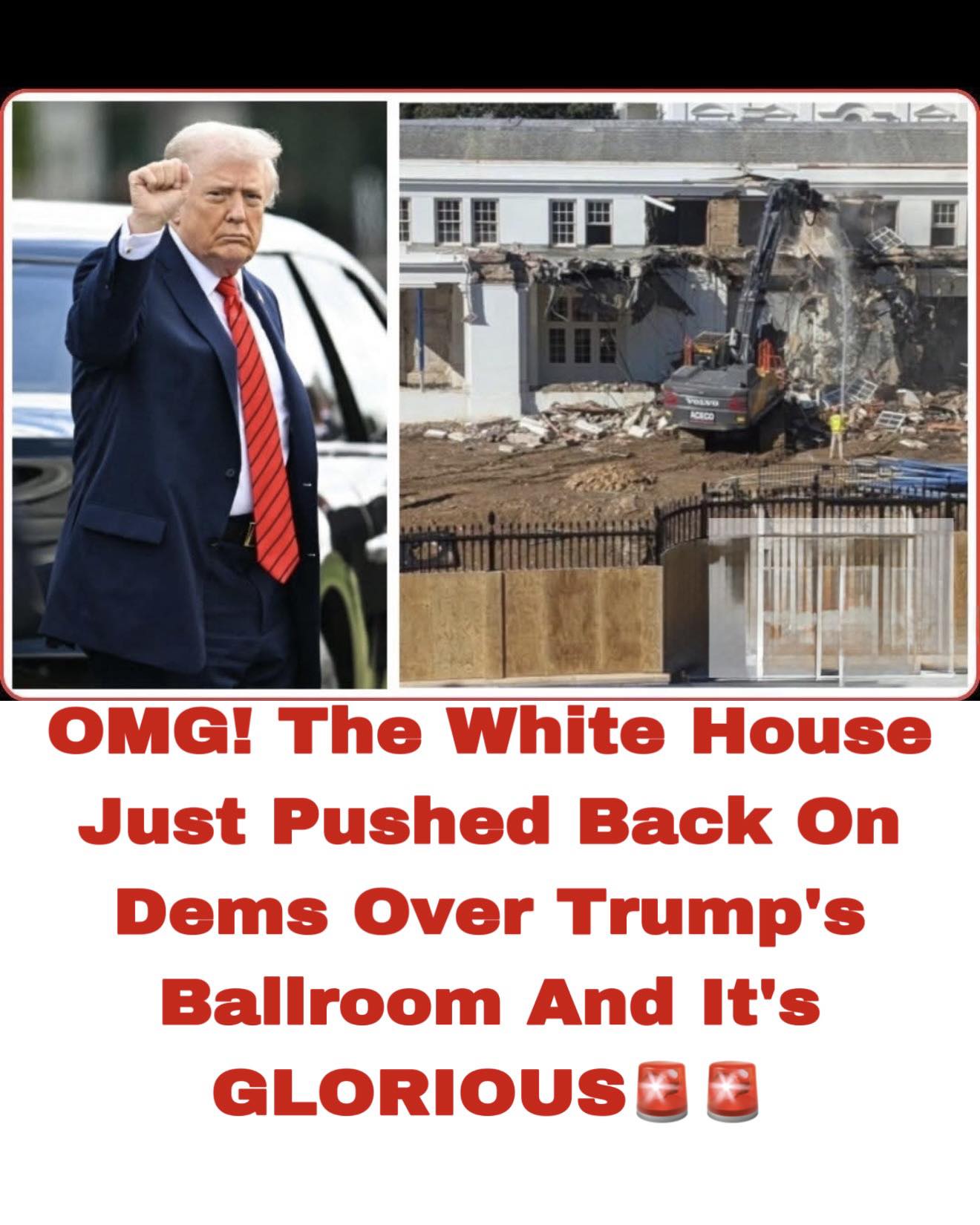The White House is firing back at Democrats who have criticized President Donald Trump’s decision to add a new ballroom to the presidential residence — a privately funded project that the administration says will modernize the historic complex without costing taxpayers a dime.
What began as another round of partisan outrage quickly turned into a public relations win for the administration, as officials and supporters highlighted what they call the “selective outrage” of Trump’s critics.
A New Space, Privately Funded
According to White House staff, the new ballroom is being built on the South Lawn and funded entirely through private donations. The project is expected to cost around $250 million — a significant sum, but far less than the extensive taxpayer-funded renovations that previous presidents have undertaken.
Trump aides argue that the ballroom will serve as a multi-purpose venue for state events, press briefings, and official ceremonies. The administration says the idea came from a need to host larger gatherings without disrupting day-to-day operations inside the White House itself.
“This project isn’t about luxury — it’s about practicality and modernization,” one senior official said. “It’s being paid for privately, and it’s going to serve the American people by improving how the White House functions.”
Still, that hasn’t stopped the backlash.
Democrats Cry Foul
Several Democratic lawmakers and commentators took aim at the project this week, calling it unnecessary and “tone-deaf” amid an ongoing government shutdown. Progressive activists online mocked the addition as an act of vanity, dubbing it “Trump Tower 2.0.”
White House officials, however, were quick to push back — noting that similar renovations under past administrations were met with praise rather than criticism.
“It’s ironic,” one spokesperson said, “that the same people who applauded the $350 million taxpayer-funded renovation under President Obama are now outraged over a privately funded ballroom that will cost far less.”
Indeed, archival footage from 2010 resurfaced showing several major news outlets celebrating former President Barack Obama’s modernization projects at the White House, which included security and technology upgrades — all covered by public funds.
The White House Responds
Rather than ignoring the criticism, the Trump administration leaned into the controversy, posting a series of statements on social media defending the decision and contrasting it with past Democratic spending.
The official White House account shared before-and-after photos of prior presidential renovations, captioned with:
“Presidents before Trump upgraded the White House using YOUR money. President Trump is upgrading it using HIS supporters’ money. That’s the difference.”
Supporters of the administration echoed that message online, calling the project an example of “private-sector efficiency” being applied to government spaces.
“Democrats have no problem when billions go to vanity projects in blue cities,” one commentator wrote. “But they lose their minds over a privately funded ballroom? Give me a break.”
A Clash Over Symbolism
For critics, however, the issue isn’t only about money — it’s about symbolism. They argue that Trump’s decision reinforces his image as a businessman-turned-president more interested in luxury than public service.
“It’s about priorities,” said one Democratic strategist. “Americans are struggling with inflation, and this sends the wrong message.”
But supporters counter that the ballroom represents a broader point about self-sufficiency and private initiative — values that Trump has championed throughout his political career.
“The same people who accuse him of being a dictator are now mad that he didn’t use government funds,” one conservative analyst noted. “The outrage doesn’t make sense.”
Historical Context
While the idea of adding a ballroom to the White House might sound unusual, presidential historians point out that the residence has been continually expanded, renovated, and modernized for over two centuries.
President Theodore Roosevelt oversaw a major redesign in 1902, creating the West Wing. Harry Truman conducted a complete structural overhaul in the late 1940s after engineers found the building in danger of collapse. John F. Kennedy led an extensive interior redesign that reshaped much of the presidential residence’s look.
“Each generation leaves its mark on the White House,” said historian Margaret Vaughn. “The outrage tends to fade once people see how these updates become part of the institution’s history.”
Political Theater or Policy Distraction?
For all the noise, political analysts suggest that the ballroom controversy is more about optics than substance. With Washington mired in a prolonged funding standoff and the media cycle increasingly polarized, both sides are eager to seize on symbolic stories that reinforce their broader narratives.
Democrats see an opportunity to frame Trump as out of touch; Republicans see an opening to paint their opponents as hypocritical and obsessed with aesthetics.
“This is the new normal,” said political analyst Jason King. “Every move is politicized, every gesture is dissected, and every president becomes a lightning rod — even over something as mundane as construction plans.”
A Familiar Pattern
The episode underscores a recurring theme of Trump’s political career: controversy that doubles as opportunity. Each time critics accuse him of excess or ego, his base tends to rally behind him even more strongly — turning backlash into momentum.
As construction crews continue work on the new ballroom, White House officials insist the debate will pass, just as similar controversies have before.
“When it’s finished,” one aide said, “people will see that this isn’t about luxury — it’s about legacy. Every president leaves something behind. This will be one of those things.”
